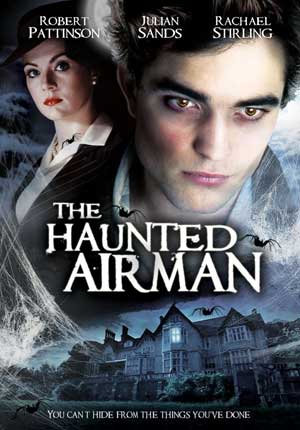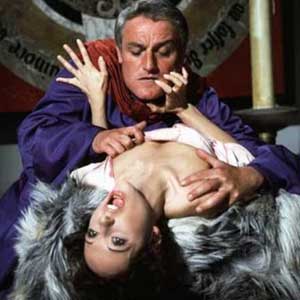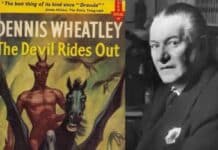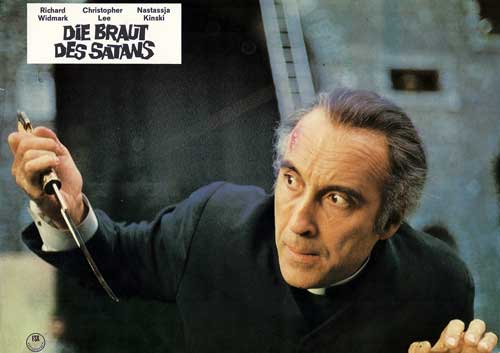BARRY McCANN looks at the film adaptations of British author Dennis Wheatley’s fantastic novels
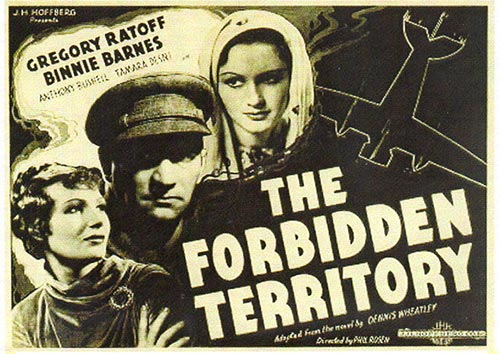
From the 1930s to the 1970s, Dennis Wheatley was the author of 54 novels ranging from historical adventures to war dramas. He more famously made his name for satanic horror tales which, by the 1960s, were sharing the bestsellers with Ian Fleming. And yet only six of his novels have been filmed.
Wheatley saw the cinema as an ideal medium in which his works could be adapted and, during the 1930s, was good friends with Alfred Hitchcock. When The Forbidden Territory was published in 1933, he presented the director with a copy and a film version was planned. Unfortunately, Hitchcock moved to Gaumont-British and his new employer, Michael Balcon, was not interested in the proposal.
The project passed to producer Richard Wainwright, who entrusted the film to American director, Phil Rosen. Gerald du Maurier, who was to play the part of the Duc de Richleau (renamed Sir Charles Farringdon in the film), died before filming began and was replaced by Ronald Squire, whom Wheatley considered miscast. On its release in November 1934, it was denied a West End premier and attracted little attention.
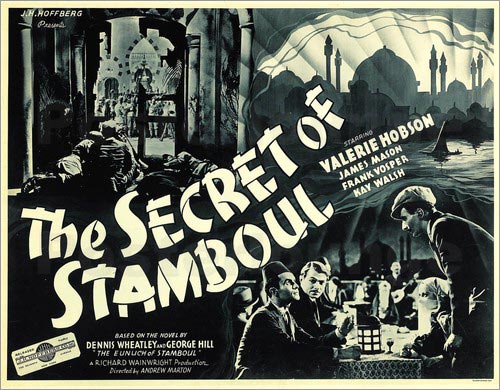
Two years later, Richard Wainwright filmed another of Wheatley’s novels, The Eunuch of Stambou, under the title The Secret of Stamboul. It starred James Mason and Valerie Hobson, and her inclusion helped it gain a US distribution (where Wheatley’s novels never found a market) as she was already a veteran of Hollywood films, including The Bride of Frankenstein. It was released there as The Spy in White.
Wheatley tried writing a couple of original screenplays, without success. The first, His Guiding Star, a comedy/thriller similar to Hitchcock’s The Lady Vanishes, failed to get studio attention. Then he tried another screenplay, The Bombing of London, (published in Gunmen, Gallants and Ghosts, 1943), which portrayed a future war with Germany resulting in London being destroyed by bombing. The conservative British film industry considered the subject too controversial and alarmist, despite H G Wells making the same prophecy in the 1936 Alexander Korda film, Things to Come.
In 1963, Hammer Films acquired the rights to Wheatley’s occult novels, The Devil Rides Out and The Satanist. Satanism had not been tackled head on by the cinema at that time (Val Lewton’s 1943 film The Seventh Victim managed to portray a Satan worshipping suicide cult through implication rather than blatantly spelling out what they were), and it was perhaps nerves at crossing this threshold that held up filming some four years. With their Dracula and Frankenstein franchises running out of steam, Hammer banked on Wheatley adaptations forming their next cycle of films.
Despite Hammer’s version of The Devil Rides Out (1968) scaling down some of the novel’s set pieces, Wheatley was pleased with the production and admired Christopher Lee in as Duc de Richleau. Lee was also pleased at being the hero for a change, while Mocata was played with delicious villainy by Charles Gray.
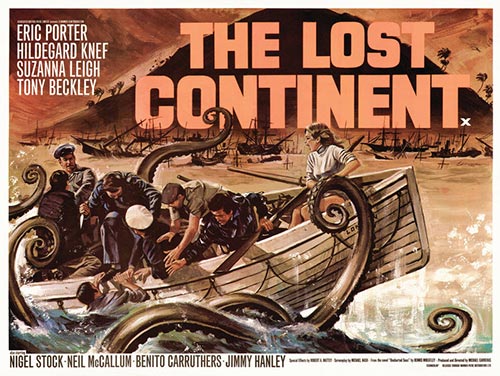
Retitled The Devil’s Bride the film flopped in America, despite a new wave of modern occult horror packing in audiences, beginning with Roman Polanski’s Rosemary’s Baby (1968). But these were modern, urban satanic thrillers that made the occult threat more immediate and real. Perhaps American cinemagoers could not relate to a more fanciful story based around 1930s English gentry.
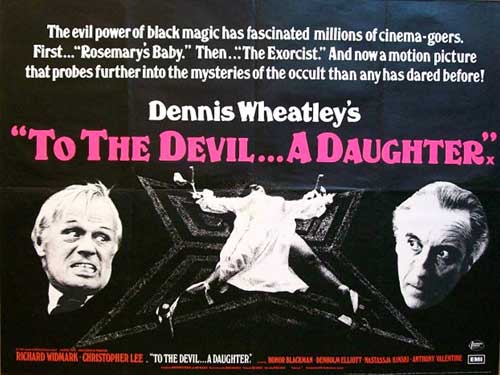
The Lost Continent, based on the novel Uncharted Seas, followed the same year and fared even less. The story’s subject, a lost horizon populated by monsters, was usually the stuff of family fare. The movie upped the sadism and gore (including vampire sea weed!) resulting in an X certificate and greatly reduced potential audience. Despite the monster effects being well realised at the time, it failed to find its audience and Hammer shelved plans for further Wheatley adaptations.
Wheatley became close friends with Christopher Lee and handed him the rights to film his occult novels for gratis. Lee formed his own short-lived production company, Charlemagne, which folded after an interesting but failed first film venture, Nothing But the Night (1972). However, with the phenomenal success of The Exorcist and popularisation of occult movies, Lee offered his Wheatley properties to Hammer. They accepted and began with To the Devil A Daughter in 1975.
With co finance from Germany, the production was an ambitious affair boasting a cast of notable British actors such as Christopher Lee, Honor Blackman and Denholm Elliot, alongside American actor Richard Widmark. However, the updated adaptation bore little resemblance to Wheatley’s original story and he vetoed plans to film The Satanist – which was to have starred Lee again and Orson Welles – along with The Haunting of Toby Jugg. It proved to be the last of Wheatley’s books to be filmed for the big screen.
In 2006, Wheatley fans became excited when The Haunting of Toby Jugg was adapted as a BBC television film. This gave way to disappointment when it turned out a travesty. Retitled The Haunted Airman, the “adaptation” ripped all the guts out of the original story and shifted it into an entirely different genre placement. The satanic conspiracy and giant spider demon were filleted out, rendering the story into a dull, flat and confusing psychological tale, in which Toby Jugg’s anxieties are externalised by shadows and a couple of harmless house spiders invading his bed. It was like Dracula without vampires.
So let us hope they do Wheatley better next time. There will almost certainly be a next time. Wheatley’s novels may be thin on the ground outside of used book shops, but they remain visceral enough to attract directors looking to get away from the usual Hollywood fayre. And they can start with The Haunting of Toby Jugg … only do it properly this time!
